It seems as though summer has finally arrived here in North Cornwall. This is the Met Office weather forecast for the next week:
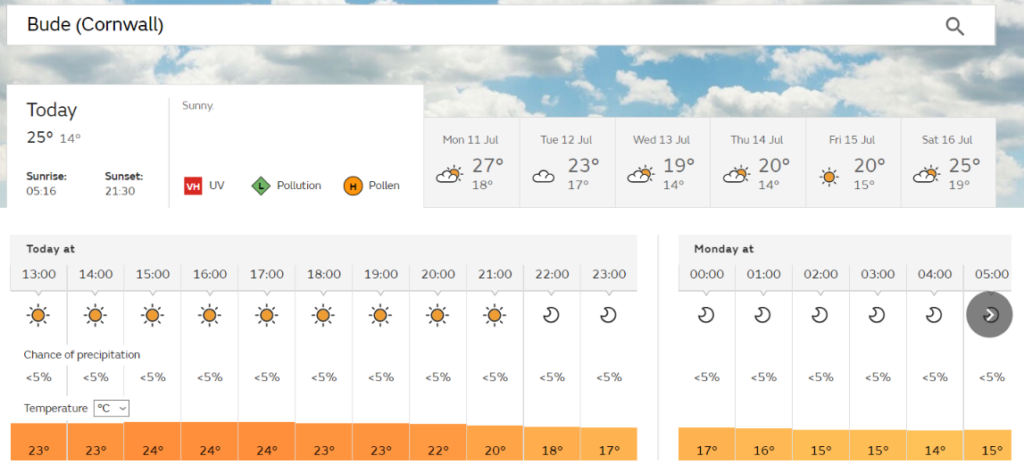
The Met Office has also issued a heat-health alert for the coming week, although it is seems unlikely that a “heat wave” will officially be declared in Cornwall:
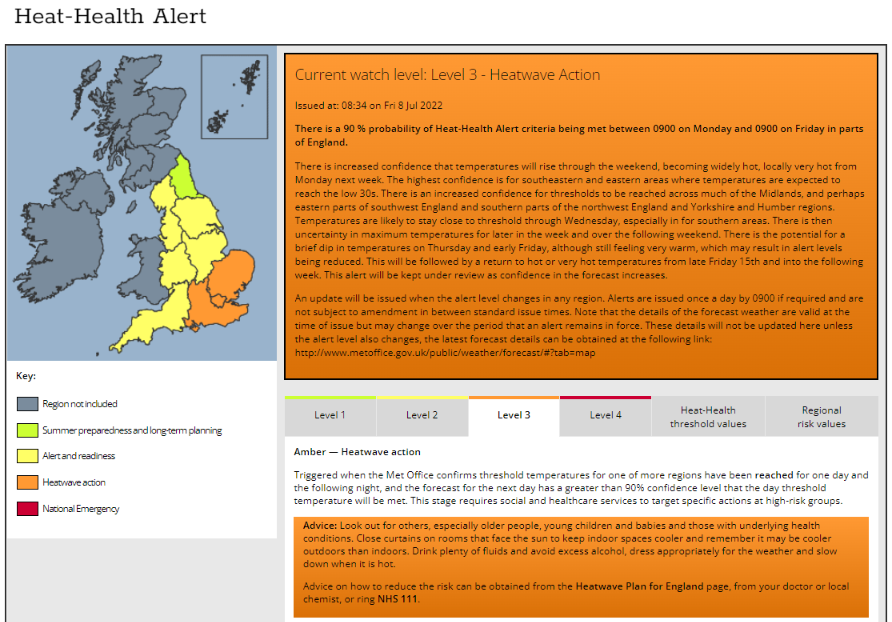
Apart from the potential impact on human health, long periods of hot weather also mean reduced rainfall and increased demand for water. According to the BBC:
South West Water (SWW) wants people in Devon and Cornwall to try to save five litres of water a day to maintain the levels of reservoirs.
“It’s been a dry start to the summer and we need your help to save water where you can,” said SWW.
The dry spell, more visitors and more people living in the region, are putting increased pressure on supplies. And demand for water is set to increase as temperatures rise in the region said the company. If each of its 2m customers saved five litres of water a day, that would save 10m litres, said the firm.
Lisa Gahan, the director responsible for water resources, said: “It’s been very dry over the last 12 months and while reservoir levels are good we have had lots of dry spells. More people are coming down on holiday and more people are living here. We just want to make sure there’s enough water for everyone to enjoy.”
The average customer uses about 150 litres a day according to SWW which said it should be relatively easy to save water.
Colliford Lake is by far the largest of Cornwall’s reservoirs. Here is South West Water’s current graph of the amount of water stored there:
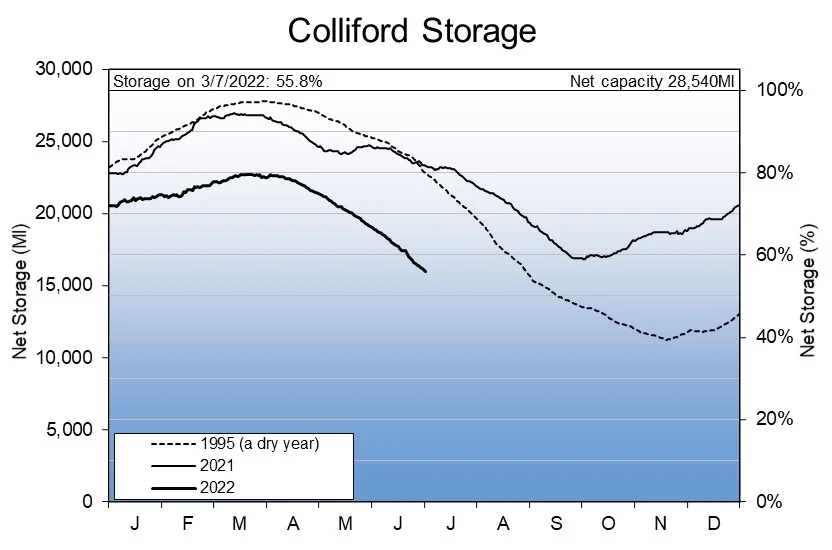
According to the current Devon & Cornwall Area Drought Plan during the “dry year” of 1995 that SWW use for comparison purposes there was:
Severe pressure on surface water resources and distribution systems, dependent on spring and summer run-off; hosepipe bans.
To be frank the 2022 level doesn’t look “good” to me! Closer to home Davidstow’s local Crowdy Reservoir isn’t big enough to merit a graph of its own, but according to the South West Lakes Trust web site it is currently only slightly more full than Colliford:
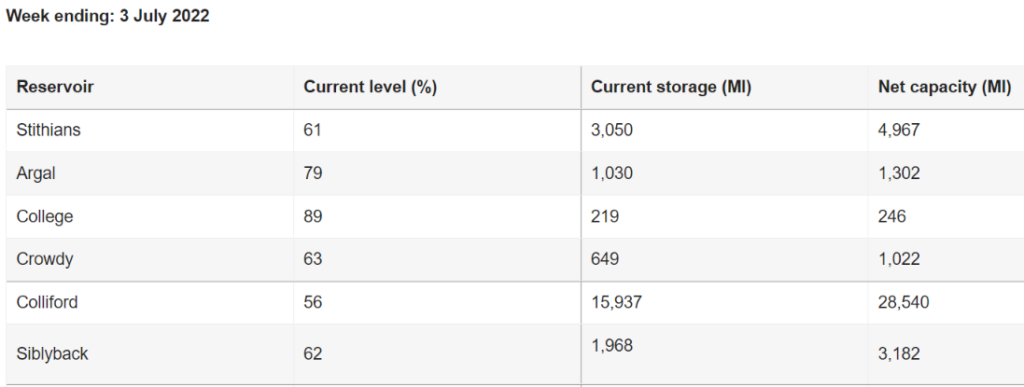
Perhaps now would be a good time to start implementing some of South West Water’s top water saving tips, such as using a watering can filled from a rainwater butt rather than a hosepipe?
Perhaps South West Water could also do more to save water? According to their web site:
We’ve halved leakage levels in our region, and have one of the lowest levels in the industry. We know there’s more work to do. As part of our plans for the future, we’re targeting a further 15% reduction in leakage by 2025.
However according to Ofwat’s 2020-21 Service Delivery Report:
South West Water… failed to achieve their 2020-21 targets. South West Water’s… three year average leakage is higher than in the baseline year and requires significant reduction.
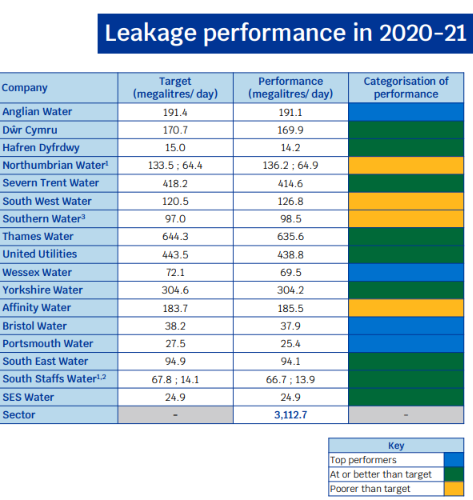
Also according to Ofwat’s report South West Water missed their target of 24.51 pollution incidents per 10,000 km of sewer. They actually managed to achieve 144.30 compared to a “sector average” of 31.91!
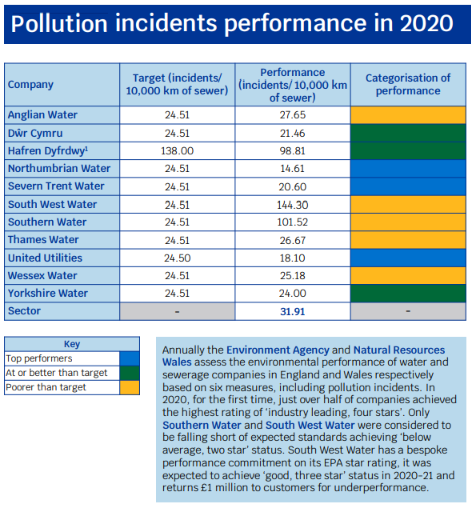
Here are the latest water storage readings for Cornwall’s two largest reservoirs:
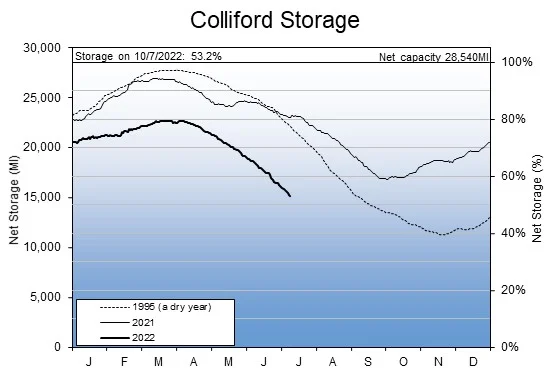
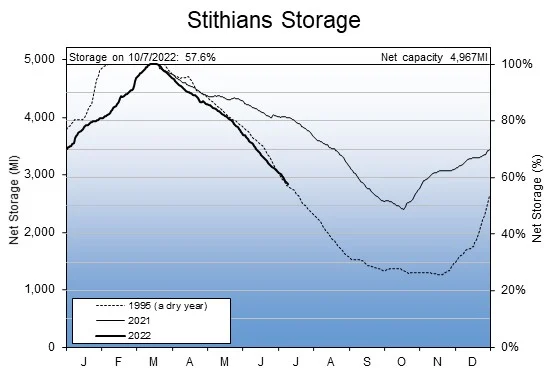
According to a BBC report by Ella Hambly:
[Edit – July 19th]Top executives of England’s water companies should face jail when serious incidents of pollution occur, the Environment Agency said on Thursday.
The call came after the regulator’s latest annual assessment showed a decline in performance on pollution for most of England’s water and sewage companies.
The agency reported 62 “serious pollution incidents” last year, up from 44 the year before as performance on pollution fell to the lowest level since 2013.
This year Southern Water and South West Water were given the lowest rating of one star, while four companies – Anglian, Thames, Wessex and Yorkshire Water – got only two stars – meaning they require significant improvement.
Only three – Northumbrian Water, Severn Trent Water and United Utilities – received the highest rating of four stars.
In the midst of record high temperatures across Cornwall and the rest of the country here’s a message from South West Water:
Meanwhile Colliford Lake is now half empty:

Stithians Reservoir is also in the news today. According to the BBC:
Low water levels have uncovered prehistoric treasures beneath a Cornish reservoir.
A collection of cup-marked stones are among the artefacts to have emerged at Stithians Reservoir near Falmouth.
There is also evidence of medieval farmsteads and modern pottery on the shoreline that is usually under water.
Archaeoastronomer Carolyn Kennett visited the lake on Monday and said: “I have not seen the water this low in a long while.”
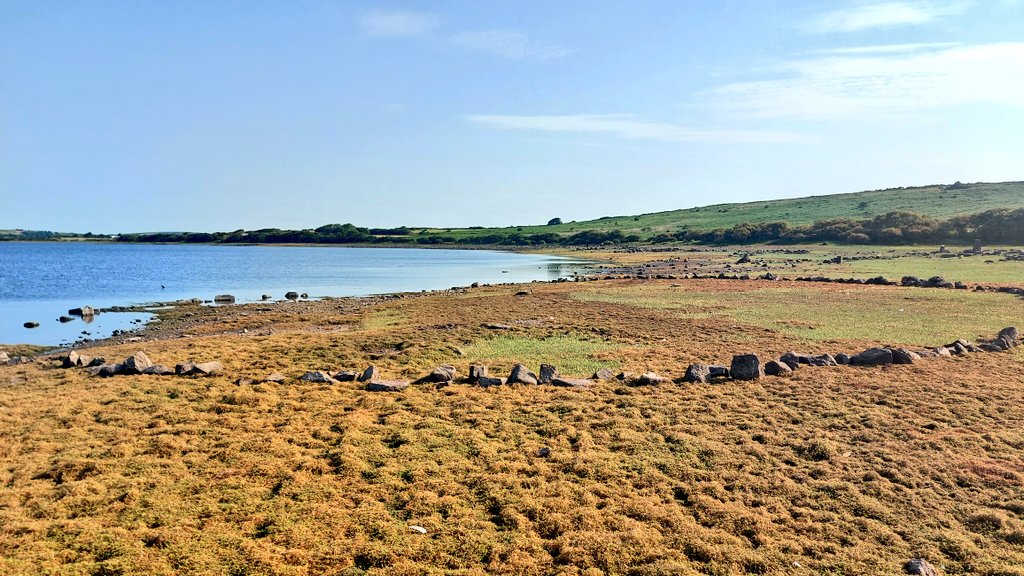
Here’s the current water storage situation at Stithians:
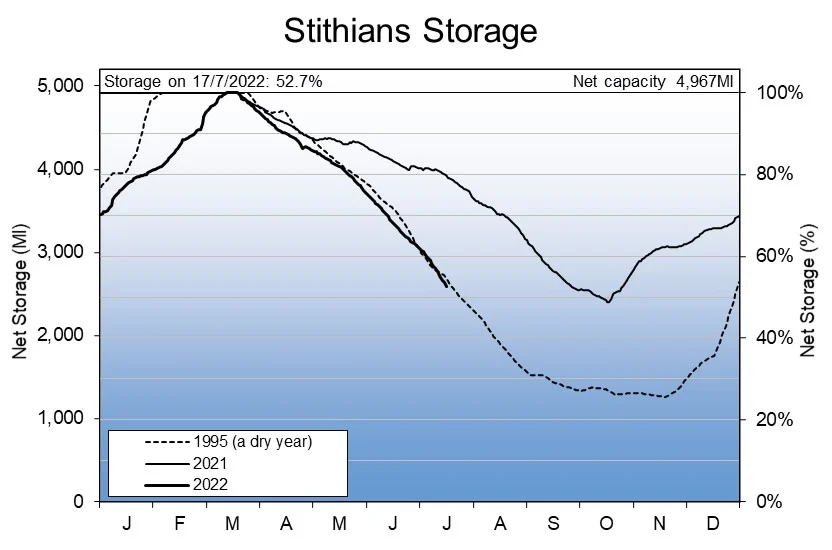
Yesterday evening was cooler than of late, so I got on my bike and cycled up the hill to Davidstow Moor to check on the state of our local Crowdy Reservoir. Here is what I discovered:
The South West Lakes Trust has just updated its table of reservoir water levels to the week ending July 17th:
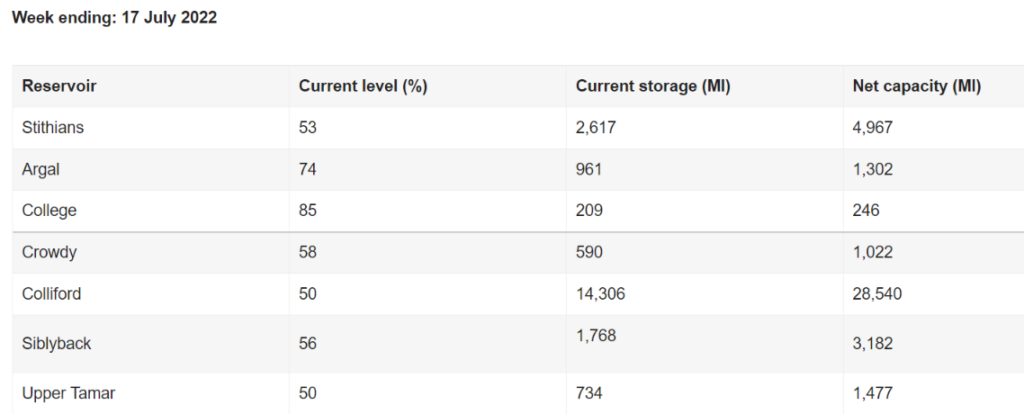
Comparison with the previous week’s readings reveal that Stithians Reservoir lost 4.9% of its total capacity in the week preceding the recent heat wave, Colliford Lake lost 3.1% and Crowdy Reservoir lost 3% (to zero decimal places).
I now await the next set of weekly water level readings with some trepidation! In particular I cannot help but wonder how many weeks it will be before water supply in Cornwall once again becomes greater than demand?
This medium term ensemble temperature forecast suggests that another, albeit more modest, heat wave could be arriving in Cornwall by the end of July:
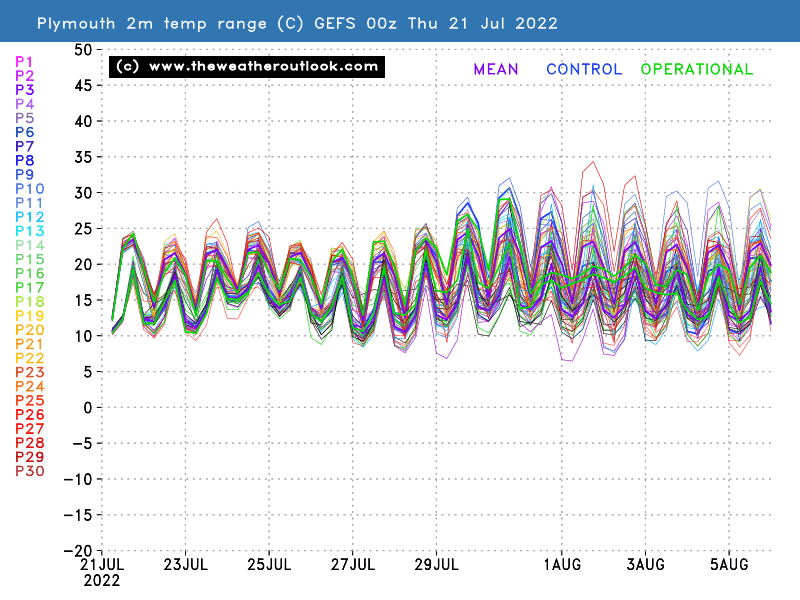
We’ve just had a few drops of rain fall on Davidstow!
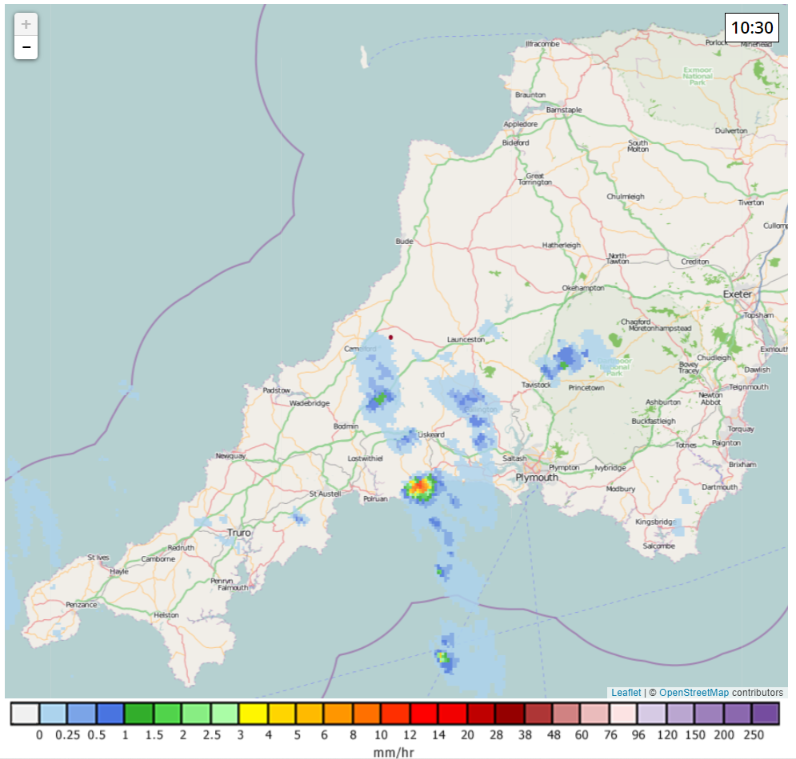
However so far this month there has hardly been any rain in North Cornwall unless you were under a thunderstorm following the recent heatwave, as we were:
Here’s the last four weeks record from the automated rainfall gauge 49104 at Colliford Lake:

Here too is the Met Office’s weather model’s prediction of cumulative rainfall across the UK for the next seven days:
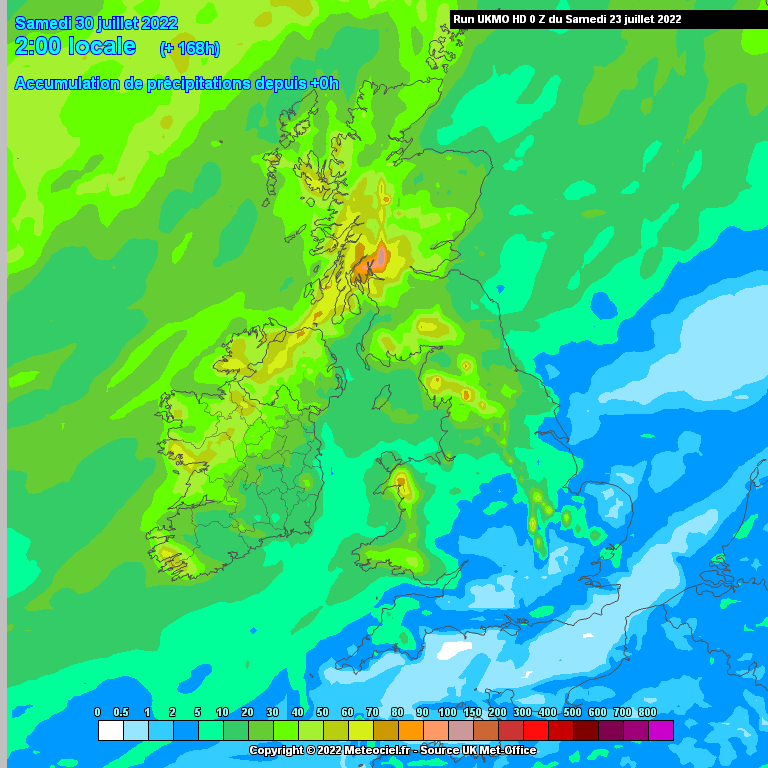
There’s not a lot to look forward to here in Cornwall.
[Edit – July 26th]According to an Environment Agency press release following today’s meeting of the National Drought Group:
[Edit – July 27th]Regulators and water companies are working together closely to manage water levels and take action where needed, including activating different levels of well-established dry weather plans in the most affected areas.
Most of England has moved into ‘Prolonged Dry Weather’ status – meaning the EA is now taking precautionary actions to mitigate impacts as hydrological conditions deteriorate and enhancing its monitoring and protection of water resources, along with the water companies.
Nowhere in England is currently considered to be ‘in drought’ and most water companies are maintaining good reservoir storage for summer demand. If further measures are required, temporary use bans (more commonly known as hosepipe bans) will be determined by individual water companies and drought permits and drought orders by the Environment Agency and Defra respectively.
However, recent abnormally high temperatures have exacerbated conditions resulting from lower-than-normal rainfall so far this year in many parts of England. With the Met Office forecasting potentially several more dry weeks ahead, particularly in the South and East of the country, the EA and water companies are now enacting the early stages of their well-rehearsed and publicly available drought plans and calling on everyone to do their bit in managing water use.
This will become even more vital in the future as we continue to adapt to a changing climate. Projections show that, by 2050, some rivers could have between 50 and 80 percent less water during the summer and summer temperatures are set to be up to 7.4 degrees hotter.
South West Water have released last week’s water level data for Colliford and Stithians reservoirs:
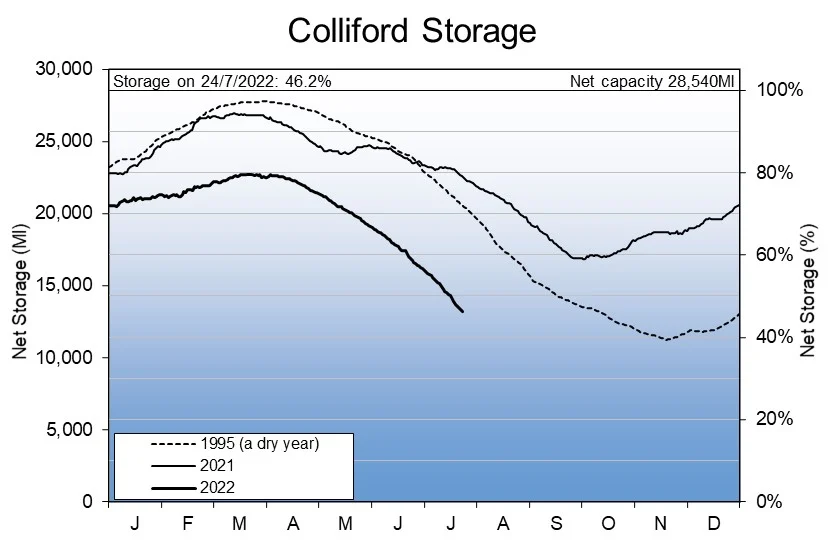
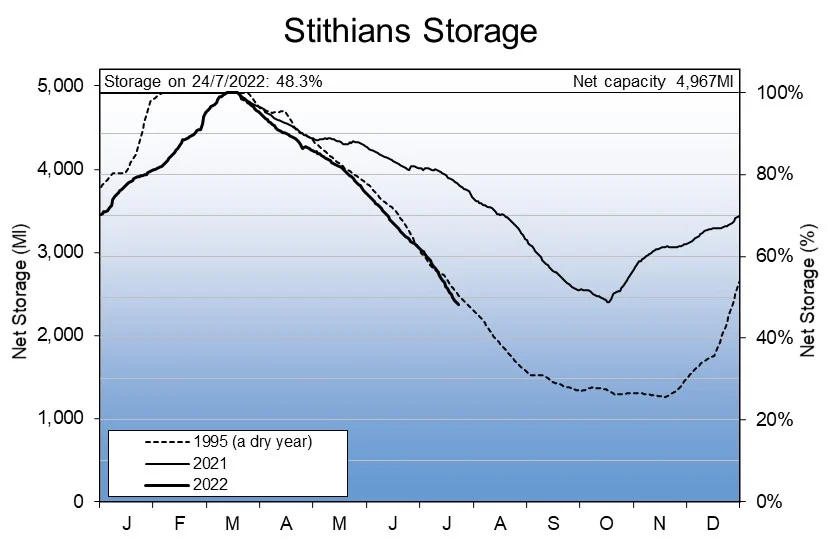
The water level at Colliford reduced by 3.9% of its total capacity. Stithians fell by 4.4%. Based on past performance the numbers for Crowdy reservoir will arrive in a couple of days.
James Churchfield discussed the Cornish reservoir situation on his BBC Radio Cornwall programme this morning. Here’s a couple of quotes. According to John Leyland from the Environment Agency:
Most of England has already moved into what we term “Prolonged Dry Weather” status, and this is the first stage of a drought. Now there is no single definition of drought, and my advice is don’t wait for it to happen. We are already in prolonged dry weather, and therefore we would already look to the public and users of water to start taking action now.
Lisa Gahan of South West Water had this to say:
If we all were to save 5 litres, which is the equivalent of being in the shower for a minute less than normally, that would save 10 million litres. That’s 125,000 baths. That would make a big difference to the reservoirs if we all took little actions like that. The first stage of our drought plan is to ask the public to use less water. What we’re hoping to avoid is the need to go into “hosepipe bans”, but there is no suggestion at all about turning the tap on and water not coming out because we’re in a much better place than we were 30 years ago in terms of the infrastructure that we have, the appliances that we have, and our awareness of environmental issues.
Please forgive me Lisa if I direct your attention to this current “environmental issue”:
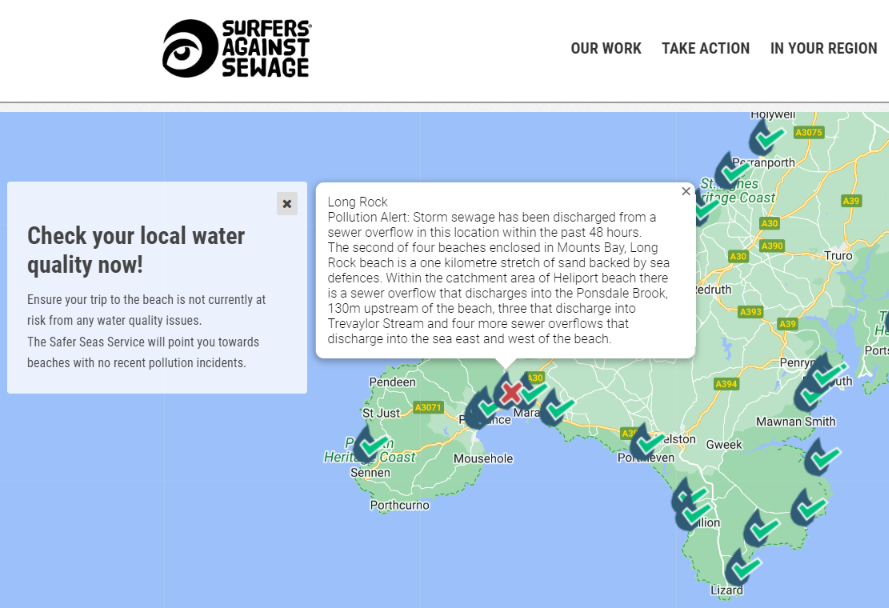
Are you already aware of it?
[Edit – July 28th]The South West Lakes Trust has just updated its table of reservoir water levels to the week ending July 24th:

Our local Crowdy Reservoir is down to 54% of total capacity, a decline of 4% (to zero decimal places).
[Edit – July 30th]The first “hosepipe ban” of 2022 has been announced, by Southern Water rather than South West Water. According to the press release:
One of our region’s driest years for a century and highest ever temperatures have caused a drought that threatens to damage the precious habitats of the River Test and River Itchen.
As a result, Southern Water is introducing a Temporary Use Ban (TUB) for its customers in Hampshire and the Isle of Wight to protect these rivers.
The extremely hot weather and reduced rainfall alongside increased demand has left the water levels significantly lower.
There’s no direct risk to customer water supply however, to ensure that everyone works together to protect our rivers, a TUB, or hosepipe ban as they are commonly known, will be implemented from Friday 5 August 2022 for customers in Hampshire and the Isle of Wight.
This will be the first time a TUB has been seen in our region since 2012…
Under the terms of this measure, using hosepipes to water gardens or clean cars will no longer be permitted and ornamental ponds and swimming pools must not be filled.

The temperature is currently 24.0 °C indoors here in Davidstow. Here is the Met Office’s forecast for our neck of the woods this morning:
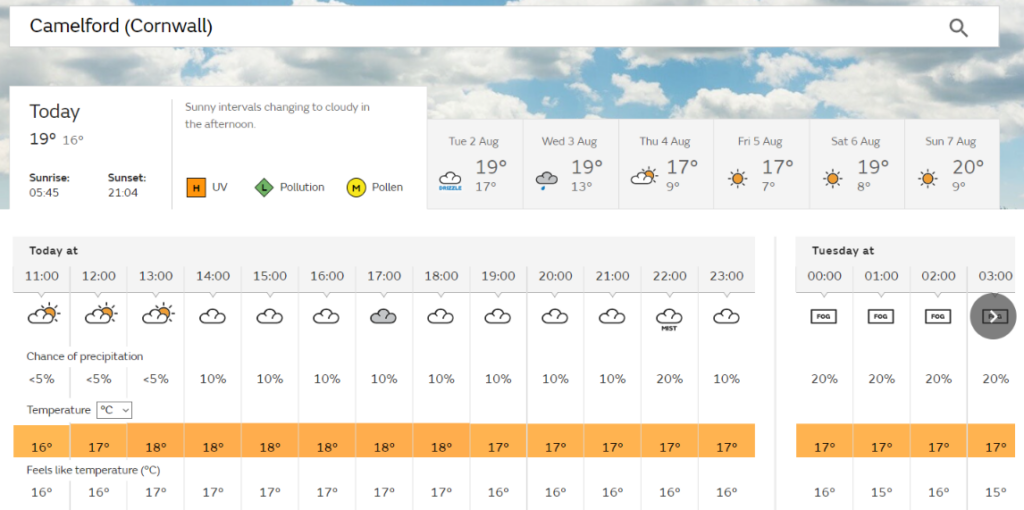
Here is the same forecast, albeit a few hours later:
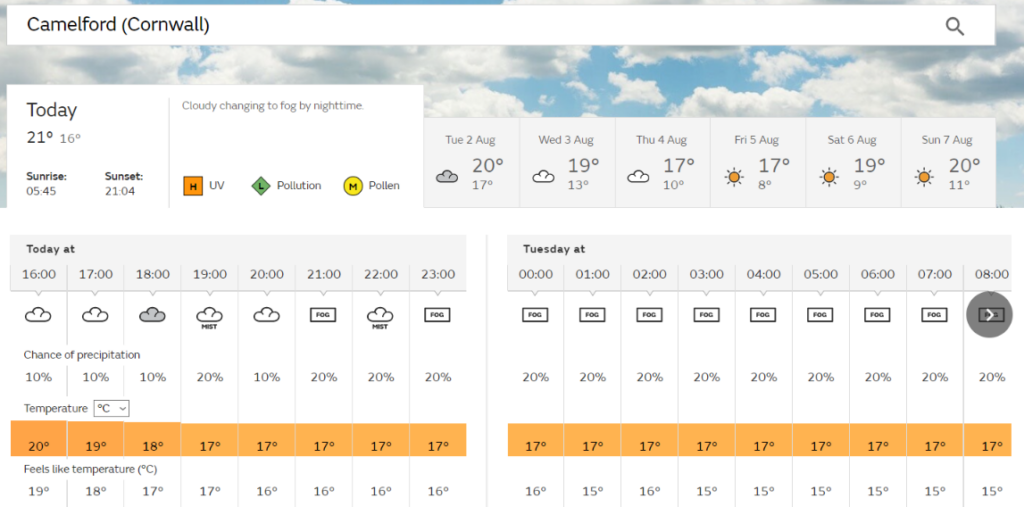
Finally here is some current “unofficial” temperature readings for North Cornwall via the Met Office’s Weather Observations Website:
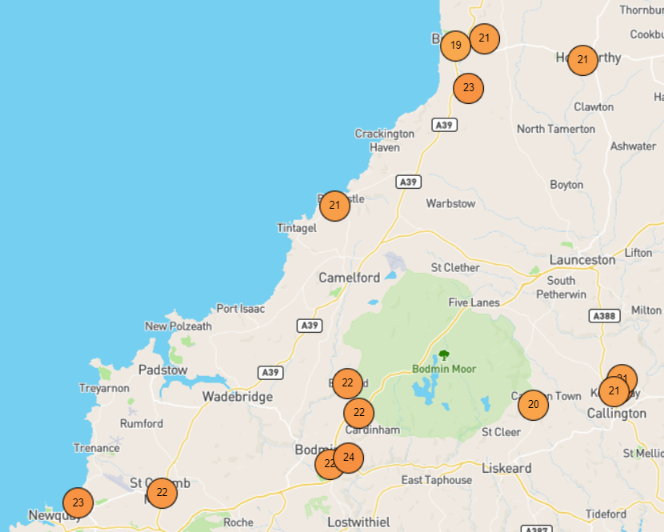
South West Water have released last week’s water level data for Colliford and Stithians reservoirs:
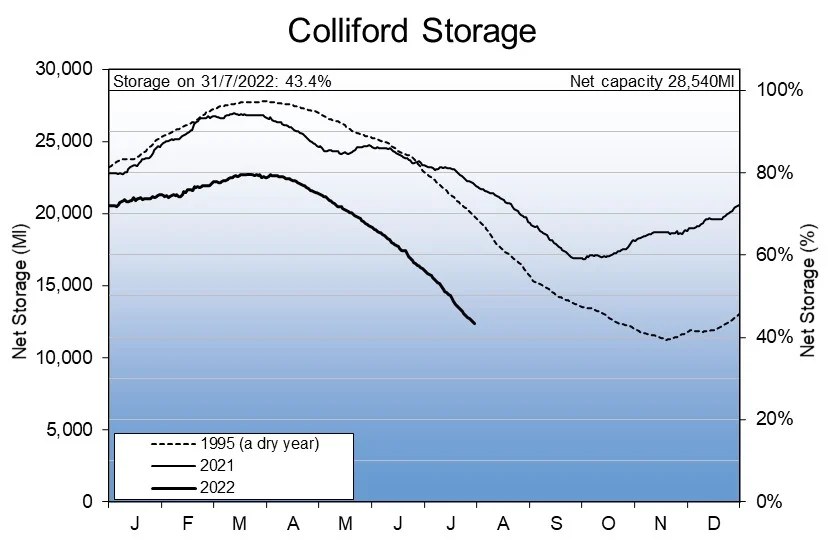
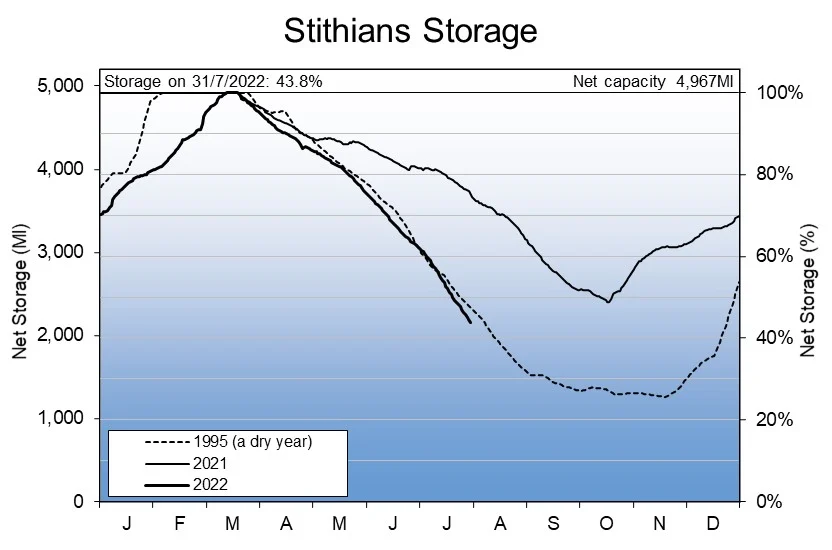
The water level at Colliford reduced by 2.8% of its total capacity. Stithians fell by 4.5%. Once again we eagerly await the numbers for our local Crowdy reservoir.
In other news South East Water have announced a temporary use ban (AKA “hosepipe ban”) beginning on August 12th:
[Edit – August 5th]Demand for water in Kent and Sussex reached record highs in July – a situation which has left South East Water with no choice but to restrict the use of hose pipes and sprinklers from 12 August in both counties.
July was the driest in Kent since records began in 1836 and saw the lowest rainfall in Sussex since 1911…
The temporary restrictions will mean that customers will be prevented from using hosepipes for watering their gardens, washing cars, patios and boats and from filling swimming and paddling pools.
As a consequence of very dry ground conditions and the resulting earth movement, South East Water has seen a 50 per cent increase in bursts along its 9,000 miles of mains running deep underground below roads, motorways, railway lines, fields and rivers. This network of pipe, laid end to end, would stretch from England to Australia.
The South West Lakes Trust has just updated its table of reservoir water levels to the week ending July 31st:

Crowdy Reservoir, which supplies the Camelford area, is down to 50% of total capacity. That’s a decline of 4% (to zero decimal places) in one week.
The next article in our “Drought 2022” series can be viewed at:
“The August Heatwave(s) in Cornwall“
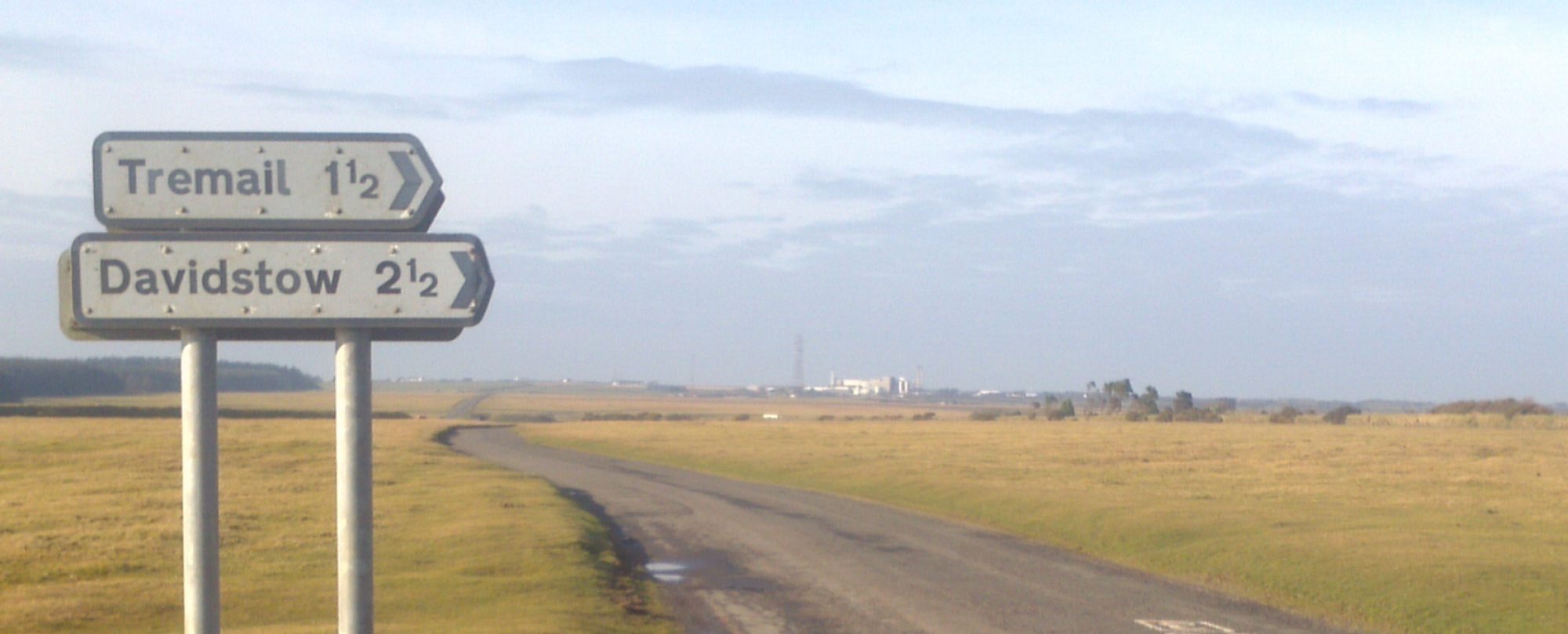
The Met Office have updated their heat-health alert this morning:
South West England is now at level 3 – “Heatwave Action”:
The Met Office has now issued an extreme heat warning for Sunday July 17th:
Davidstow is right on the edge of the warning area shown, but note in particular the part of the warning which points out that:
However this morning’s run of the Met Office’s weather model seems to have backed off from the extremes suggested previously:
The Met Office’s extreme heat warning has been extended to include Monday July 18th:
Here’s the current Met Office model forecast for the highest temperatures across the UK for the afternoon of the 18th:
The Met Office’s extreme heat warning has been extended again, to include Tuesday July 19th:
https://twitter.com/metoffice/status/1547176525644038144
Things aren’t nearly as bad here in the West Country, but the Met Office’s weather model is currently forecasting temperatures of 38 °C in Central England on the afternoon of July 19th:
The Met Office is now forecasting temperatures of over 30 °C for the Davidstow area on Monday afternoon:
The Met Office have extended their amber extreme heat warning to cover the whole of Cornwall for Monday and Tuesday:
The latest modelled maximum temperatures across the UK for Monday and Tuesday afternoons now look like this:
The Met Office’s heat-health alert has also been updated to a red “Emergency” level across South West England this morning:
According to the Met Office’s Weather Observations Website the highest “unofficial” temperature recorded in North Cornwall so far today is 27.7 °C at Poundstock near Bude:
The latest weather model run predicts temperatures in the low to mid 30s in North Cornwall on Monday afternoon:
Here’s today’s Met Office weather forecast for Bude:
According to their unofficial WOW site temperatures have reached over 30 °C slightly inland in Poundstock:
In Davidstow our indoor thermostat is reading 26 °C at the moment. The Met Office’s weather model is predicting significantly higher temperatures for tomorrow afternoon across the UK, including here!
A cooler morning in Davidstow is very welcome, with temperatures of 25 °C inside and 20 °C outside.
We’ve also had some rain, and there’s thunder showers not too far away:
Further afield, the 0Z Met Office model run reveals temperatures of 39 °C near the east coast later today, with a tiny area topping 40 °C:
P.S. Thunder and lightning and heavier rain have now arrived in Davidstow:
A provisional new all time high temperature for Cornwall was recorded yesterday:
https://twitter.com/DavidstowInfo/status/1549347992070651905
A provisional new all time high temperature for England has been recorded today:
https://twitter.com/metoffice/status/1549371238635683841
Here’s the Met Office’s list of previous record highs:
Here in Davidstow the temperature reached 27 °C indoors this afternoon.
Further afield across North Cornwall here are some “unofficial” outside temperatures via the Met Office WOW site:
This evening’s summary from the Met Office:
https://twitter.com/metoffice/status/1549448971676012546
A satellite image of Cornwall on July 16th 2022:
Another one from July 18th 2022:
Plus one from August 22nd 1995 for comparison purposes:
Click the image for an enlarged version.
We have at least had a few showers here over the weekend.
Here is the latest update from the automated rainfall gauge at Colliford Lake: :
Despite the recent showers Davidstow Moor has taken on a distinctly brownish hue:
The high moor not so much:
The Met Office have just published a blog post, revealing amongst other things that at the end of June most of Cornwall was slightly wetter than at the same time of year during the infamous summer of 1976:
I’ve had a conversation with South West Water over on Twitter today:
Lisa hasn’t got back to me yet regarding my final question. Neither has anybody else from South West Water.
In a Tweet earlier today South West Water stated that:
However their web site currently states that:
Hence I’m more than a little confused about the current demand for water in Cornwall!
The Met Office have verified the new maximum temperature records for England and Wales. According to today’s announcement:
The GEFS medium range weather forecast is currently suggesting another, if less extreme, heatwave. Here’s the current ensemble mean forecast for August 10th:
Here too is the same date from one of the hotter ensemble runs:
That shows maximum temperatures in South West England not far off those reached last week. It may well not happen, but if it does South West Water should perhaps anticipate another surge in water demand across Cornwall?
Here is the Met Office’s current forecast for the next wave of heat across southern England in a few days time:
Nowhere near as hot in Cornwall as the last one, but more pleasant than the mizzly day we’ve had today!
Here are the Met Office weather model’s forecast maximum temperatures across the UK for this evening:
Plus for Tuesday:
and Wednesday:
The recent mizzle has stopped, the mist has wafted away, and the sun is shining here in Davidstow once again.
The Met Office forecasts lots more sun and rising temperatures for our neck of North Cornwall over the next week:
Here too is the rainfall record for the last month from the automated rain gauge near Colliford Lake:
plus the Met Office’s overview of July rainfall across the UK:
Cornwall was very dry, albeit not actually multi-decadal record dry:
The weekly rainfall and river flow report confirms that the last full week of July was extremely dry across Cornwall as a whole:
It seems as though South West Water are hard at work:
But apparently not in Cornwall!
The Met office are currently forecasting a dry and sunny week ahead for our neck of the woods, with a maximum temperatures of 25 °C next Wednesday:
Here is the Met Office weather model’s current temperature and cumulative rainfall forecast for next Thursday afternoon: